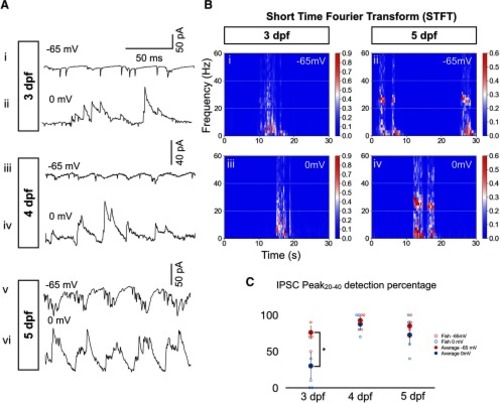Figure 6.
- ID
- ZDB-FIG-200225-19
- Publication
- Roussel et al., 2020 - Spatiotemporal transition in the role of synaptic inhibition to the tail beat rhythm of developing larval zebrafish
- Other Figures
- All Figure Page
- Back to All Figure Page
|
IPSCs mature from arrhythmic at 3 dpf to rhythmic with a frequency close to that of tail beats at 5 dpf during swimming episodes. |

